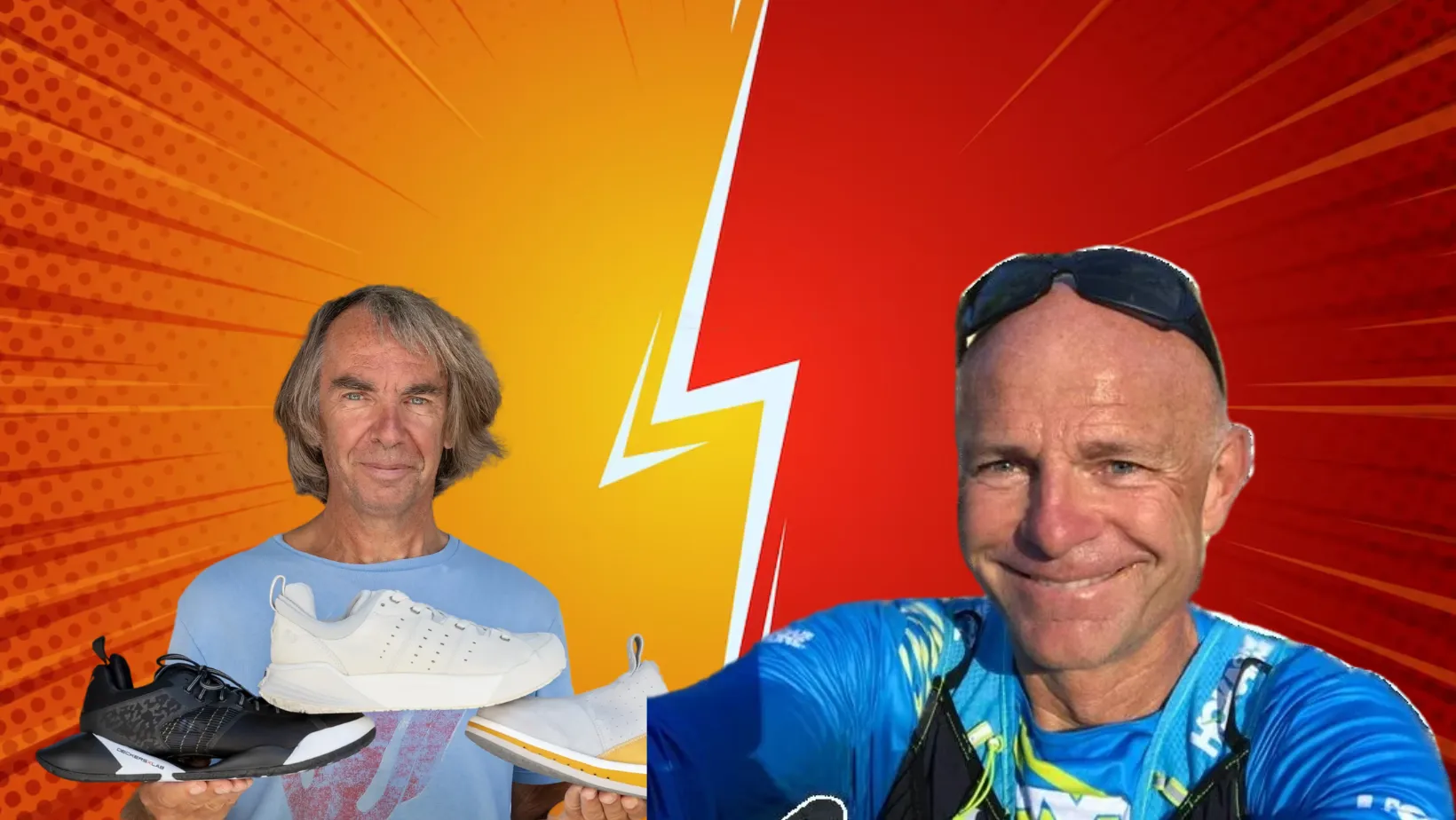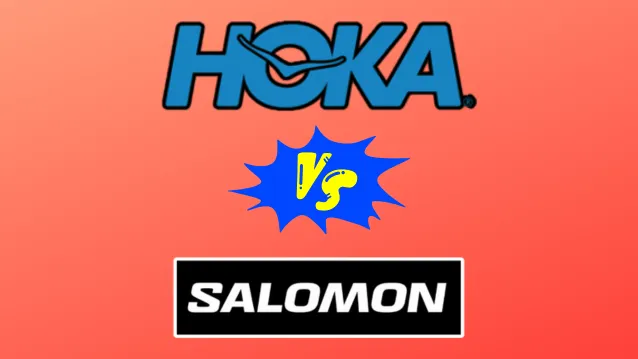With so many running shoe brands on the market, it can be hard to decide which is best for your needs. Hoka and Salomon are two top footwear companies with excellent reputations for performance and comfort.
But with different strengths and features, how do you choose between them? In this comprehensive comparison guide, you’ll learn about the key similarities and differences between Hoka and Salomon shoes.
We’ll compare critical factors like fit and sizing, cushioning, traction, ideal terrain, price, style, and more.
Comparison Table Between Hoka And Salomon;
| Features | Hoka | Salomon |
|---|---|---|
| Founded In | 2009 | 1947 |
| Comfort & Fit | Maximal cushioning, wide toe box | Variable based on model – narrow to wide fit |
| Color Options | Limited colorways | Wide range of color options |
| Durability | Average – foam bottoms wear over time | Durable, long-lasting |
| Performance | Excellent shock absorption, smooth ride | Great traction, stability features for support |
| Design & Style | Chunky, thick platform sole | Athletic/outdoorsy style |
| Popularity | Popular among injury-prone runners | Popular among trail runners and hikers |
| Best Selling Model | Clifton | Speedcross 6 |
Hoka Overview:
Founded in 2009 by Nicolas Mermoud and Jean-Luc Diard, Hoka One One burst onto the scene with their super thick midsoles, aiming to provide maximum cushioning for runners.

Initially, their oversized design was polarizing. But as more runners experienced the plush ride, Hoka gained a cult following among ultramarathoners and trail runners.
Hoka remains focused on cushioning and stability to create a smooth, comfortable run. Signature technologies like the Meta-Rocker outsole encourage a natural gait cycle and transition. The roomy toe box allows your feet to splay and relax over long miles.
For runners who struggle with joint pain and hard impact, Hoka’s pillow-like foam brings sweet relief. The soft landings and energetic rebound make each stride feel effortless. It’s easy to see why Hokas have a reputation for comfort.
Hokas aren’t the most flexible shoe due to the higher platform. And the bulky silhouette isn’t for everyone. But for runners craving a cushy feel, Hoka delivers plush shoes that can go the distance in blissful comfort.
Salomon Overview:
Salomon was founded in 1947 by François Salomon in Annecy, France.

Originally a metalworking shop, the company transitioned into ski and outdoor equipment in the 1990s.
Today, Salomon produces high-performance shoes and boots designed for activities like trail running, hiking, and skiing. Some key technologies include:
- Sensifit system: Designed to cradle the foot for a secure, snug fit
- Endofit technology: Interior sleeve hugs the forefoot for customized comfort
- Contagrip outsole: Provides durable traction on varied terrain
- EnergyCell midsole: Offers responsive cushioning that retains bounce over time
Salomon shoes have an athletic, outdoorsy style with bright color options. They’re built to handle tough terrain while providing foot-hugging comfort and support features to aid stability. The brand is especially popular among trail runners and hikers.
Major Differences Between the Brands
So far we have come across the history of both Salomon and Hoka. Now we will see how both of these compare in different important segments.
1) Comfort & Fit
Hoka shoes are renowned for their ultra-cushioned sole. This maximally cushioned ride feels like walking on clouds. They have thick memory foam around the ankles and a wide toe box. However, some find the weight and boxy shape uncomfortable.
Salomon offers a more customized, contoured fit. Models like the XA Pro 3D use Sensifit technology to cradle your foot. The snug heel and Endofit interior sleeve prevent in-shoe slipping. Those with wide feet may find Salomon too narrow.
Winner: Tie. It depends on your foot shape. Hokas suit wide feet best while Salomons better fit narrow to average-width feet.
Also Check Out: Hoka VS Skechers: Which Is Better?
2) Durability & Performance
The plush foam midsoles of Hoka deteriorate faster than the sturdy rubber soles of Salomons.
Furthermore, Salomon soles have superior traction on demanding terrain like mud or snow. However, on pavement, Hokas excel at delivering smooth, well-cushioned rides mile after mile. Their thick foam absorbs shock exceptionally.
Winner: Salomon has better traction and outsole durability while Hoka excels at delivering consistent cushioning and shock absorption over the long haul.
Also Check Out: Dansko VS Hoka: Which Is Better?
3) Price
Hoka and Salomon models range widely in price from $100 to $250.
On average, Salomon tends to be a bit more affordable. For example, popular models like the XA Pro 3D and Speedcross 5 trail running shoes retail for around $145 while comparable Hokas cost $150 and up. However, Salomon’s high-end hiking boots run $200+ like Hokas.
Winner: Salomon wins for having more budget-friendly options under $150.
Also Check Out: Hoka VS Ryka: Which Is Better?
4) Design & Style
Hoka shoes have an unmistakably chunky, thick platform sole. The maximalist look isn’t for everyone. They come in muted colors and limited styles.
Meanwhile, Salomons look like rugged, sporty trail shoes ready for adventure. They offer diverse neutral and bright color options to match your tastes.
Winner: Salomon has the edge for offering more stylish choices.
Also Check Out: Hoka VS Mizuno: Which Is Better?
5) Popularity
Hoka exploded in popularity over the last decade. The cushy ride appeals to injury-prone runners and those who need extra shock absorption.
Salomon has historically cornered the market among hikers and trail runners who value grip and foot security when moving fast over difficult terrain.
Recently Hoka has also expanded into hiking shoes while Salomon has gained traction among road runners.
Overall, Hokas have greater mainstream appeal among the general running population.
Winner: Hoka gets the check for popularity, especially among road runners.
Also Check Out: Hoka VS Under Armour: Which Is Better?
6) Target Market
The maximal cushioning of Hoka shoes appeals most to injury-prone runners looking for comfort on long miles of pavement or groomed trails. Their soft ride keeps their legs more refreshed.
Salomon targets trail runners and hikers traversing uneven terrain where grip, stability, and agility matter. Salomon shoes support fast footwork over roots and rocks. Their Endofit technology secures feet when bombing downhill.
While both brands have broadened their scope recently, their original target markets differ.
Final Verdict:
For runners seeking lightweight maximal cushioning for road miles, Hokas are hard to beat. But for technical trails, Salomon’s contoured fit and traction excel.
Consider your comfort needs, running terrain, and foot shape to decide which brand is the best fit!
With that, this informative comparison comes to an end. I hope you now have a clear idea of which brand is ideal for you.


